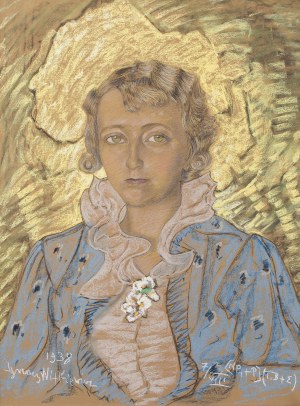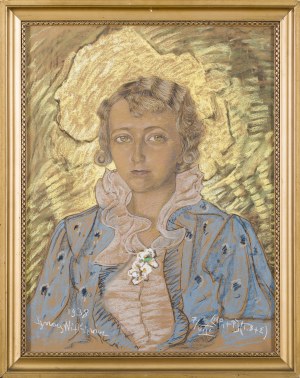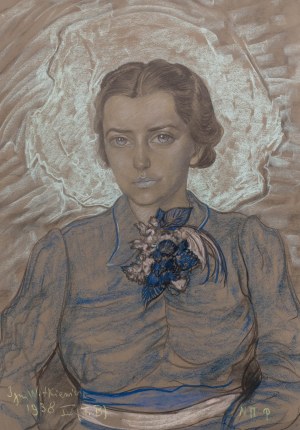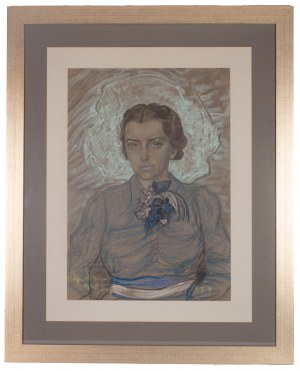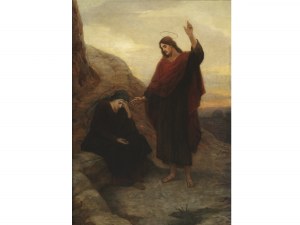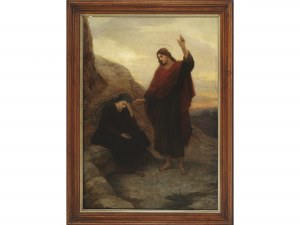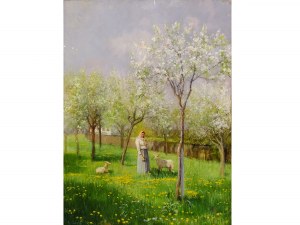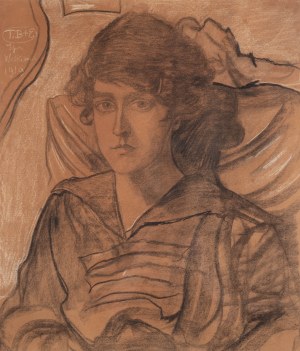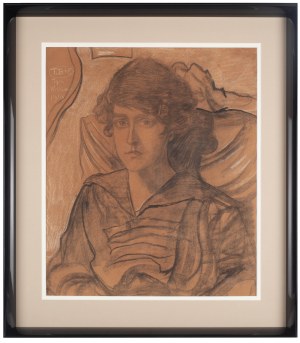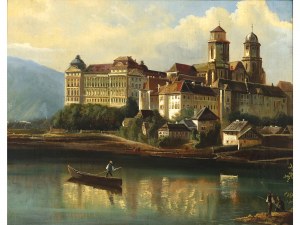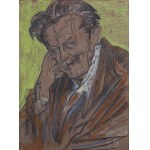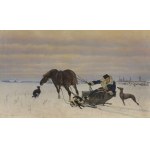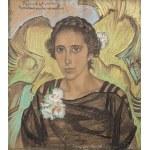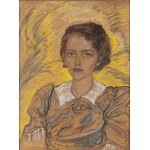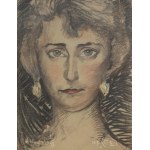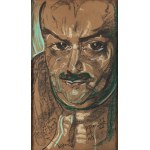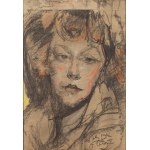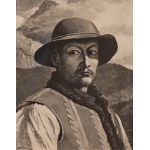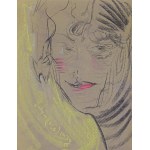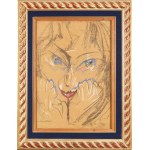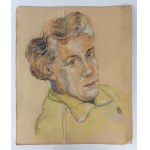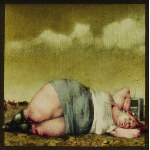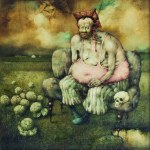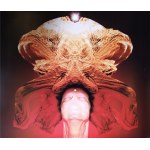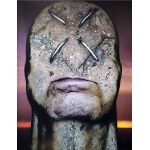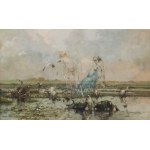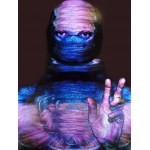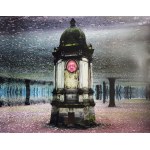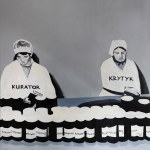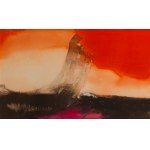Signed p.g.: Ignacy | Witkiewicz | 1923 | T.B [in circle].
The painting has an expert opinion by Dr. Anna Żakiewicz dated September 2022.
The portrait of Czeslaw Jankowski was made two years before the official establishment of the Portrait Company. It was classified as Type B, which, according to the Regulations, included images that were "characteristic, but without a shadow of caricature." They resembled photographs usually placed in identity cards, passports, driver's licenses, etc., but always expressed the extremely aptly captured individuality of the model. Such portraits were generally signed by Witkacy with his second name and surname rather than a pseudonym, thus emphasizing their official character.
Jankowski's portrait perfectly fulfills these assumptions. For it depicts a respectable, elderly, 66-year-old gentleman with noble facial features, combed up lush, though already heavily graying hair and a slightly disheveled abundant moustache, dressed in a dark suit with a vest, the cutout of which shows a white shirt with a button-down collar and a beige tie. The image is kept in subdued colors, in the convention of realism, only the background has been built up of geometric forms surrounded by dark contours, which corresponds to the artist's oil paintings of the time and his drawn compositions.
Czeslaw Tomasz Ignacy Jankowski (1857-1929) was a poet, publicist, journalist, translator of fiction, theater and literary critic, as well as a political and social activist. He was also interested in history and ethnography, especially borderland history. He lived and worked mainly in Vilna, but also in Warsaw. He was an acquaintance of Karol Szymanowski and Jaroslaw Iwaszkiewicz, with whom Witkacy was also friends. Witkacy made at least three portraits of Jankowski, one of which (from 1922) is now in the National Museum in Warsaw. In 1927 Jankowski wrote a scathing review of Witkacy's just-published novel Farewell to Autumn, generally full of excoriating "morbid imagination" and "mucking about in swine," whichwhich, however, ends with an unexpected statement that the novel is "a masterpiece of mock mystification, at which no one excels like this in Poland, or even perhaps in Europe" (Świństwo "metafizyczne", "Słowo" 1927, no. 210, p. 3).
Witkacy was also friends with Jankowski's daughter, Irena, with whom they went to the mountains together, went skiing, and the artist frequented the fajfs she organized. Of course, he also made portraits of her.
To sum up, Portrait of Czeslaw Jankowski from 1923 is an extremely interesting work, both because of the time of its creation - before the Portrait Company was established, but already an excellent exemplification of it - and because of the person of the portrayed: the creator of Polish culture in its many manifestations, from the turn of the 19th and 20th centuries. to the end of the first decade of the interwar period, a respectable figure, in addition - not devoid of a critical sense and an intelligent sense of humor, which must have particularly appealed to Witkacy.
Following the expert opinion of Dr. Anna Żakiewicz
Stanisław Ignacy Witkiewicz (Warsaw 1885 - Jeziory in Volhynia 1939) was educated at home under his father, Stanisław Witkiewicz. In 1903 he passed his high school diploma in Lviv. In 1904 he began traveling, including to Vienna, Italy, Munich, Paris and London. Between 1904 and 1910 he studied at the Academy of Fine Arts in Cracow with Prof. Jozef Mehoffer, interrupted by periods of study with Władysław Ślewiński. In 1914 he left with Bronislaw Malinowski's expedition to Australia, and from there went directly to St. Petersburg, where he enlisted in the Russian army after the outbreak of WWI. In Russia, he witnessed the Bolshevik Revolution.
After returning to the country in 1918, he became a member of the "Formists" group, with which he exhibited from 1918 to 1922. In the painting of this period, he came closest to putting into practice his own theory of Pure Form, formulated during the war (it also applied to drama). Along with Leon Chwistek, he was the main theoretician of the grouping. After 1924, he operated as a one-man "S. I. Witkiewicz Portrait Company'' making portraits on commission. At the same time, he continued his literary (dramas, novels) and philosophical work, but above all he practiced the "art of living" that united all forms of his activity, appreciated only at the end of the 20th century. He committed suicide at the beginning of World War II, the day after the Soviet aggression against Poland.











